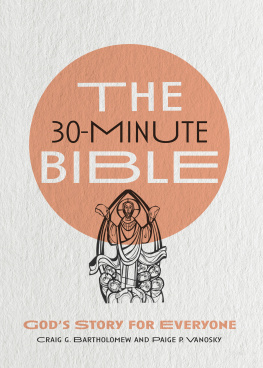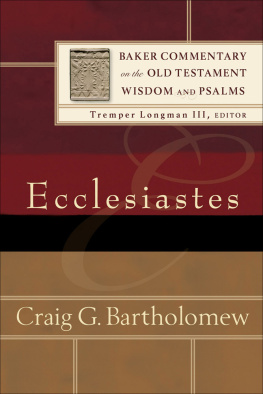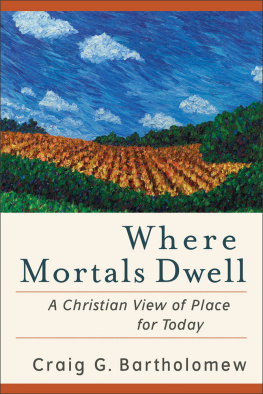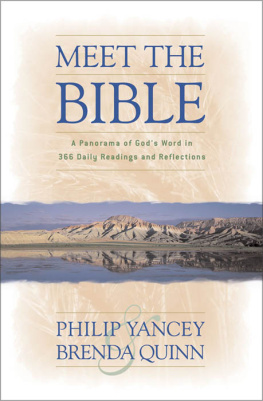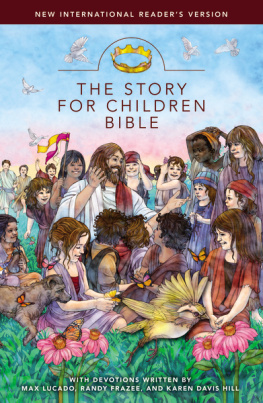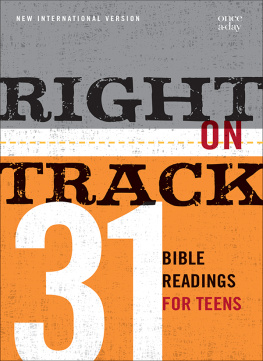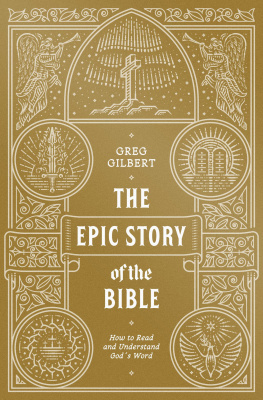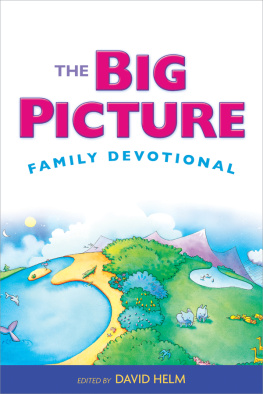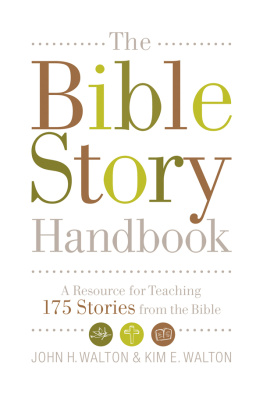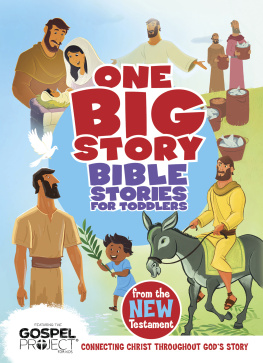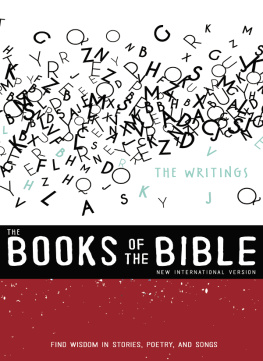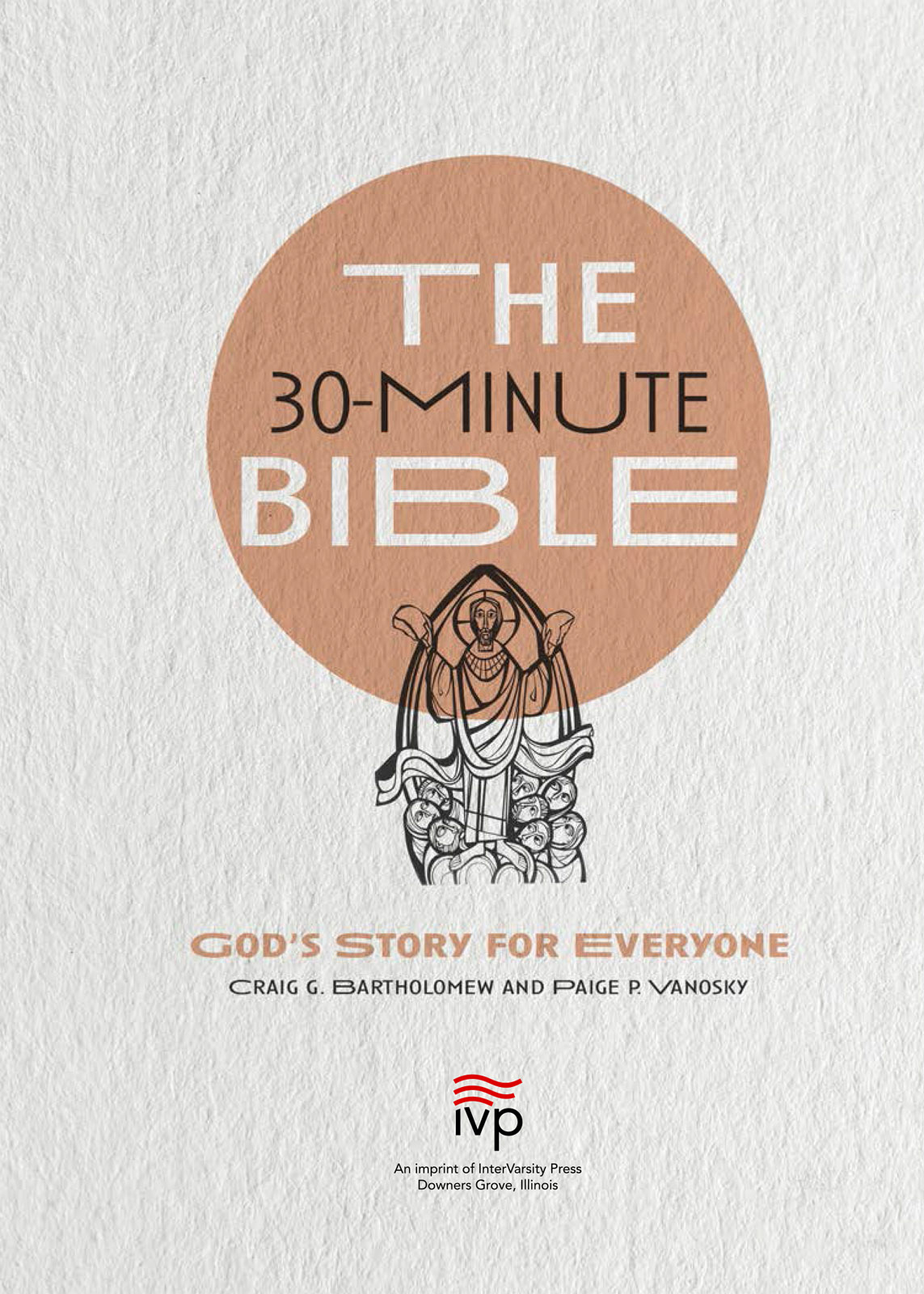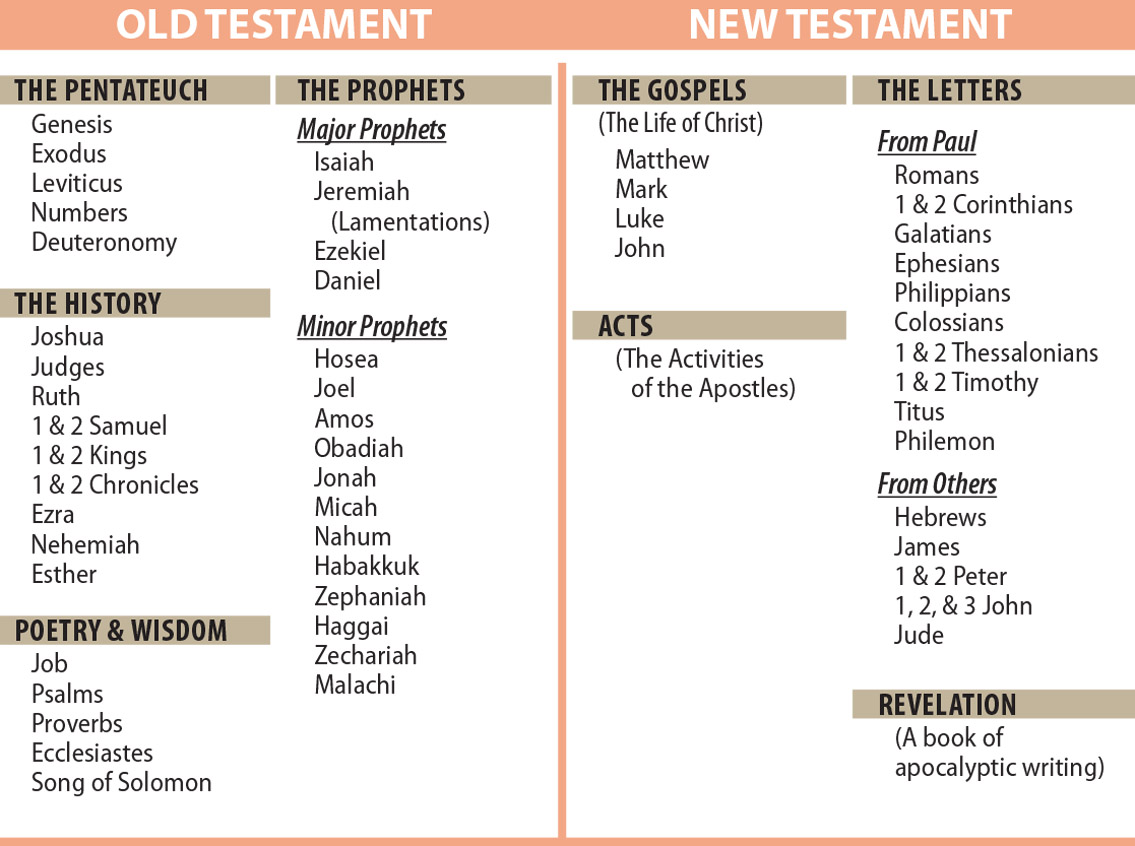Sommaire
Pagination de ldition papier
Guide
InterVarsity Press
P.O. Box 1400, Downers Grove, IL 60515-1426
ivpress.com
2021 by Paige P. Vanosky and Craig G. Bartholomew
All rights reserved. No part of this book may be reproduced in any form without written permission from InterVarsity Press.
InterVarsity Pressis the book-publishing division of InterVarsity Christian Fellowship/USA, a movement of students and faculty active on campus at hundreds of universities, colleges, and schools of nursing in the United States of America, and a member movement of the International Fellowship of Evangelical Students. For information about local and regional activities, visit intervarsity.org.
All Scripture quotations, unless otherwise indicated, are taken from The Holy Bible, New International Version, NIV. Copyright 1973, 1978, 1984, 2011 by Biblica, Inc.Used by permission of Zondervan. All rights reserved worldwide. www.zondervan.com. The NIV and New International Version are trademarks registered in the United States Patent and Trademark Office by Biblica, Inc.
Interior black and white illustrations by Martin Erspamer OSB
Tabernacle illustration is 2019 InterVarsity Press. First published in The Old Testament in Seven Sentences by Christopher J. H. Wright
The publisher cannot verify the accuracy or functionality of website URLs used in this book beyond the date of publication.
Cover design and image composite: Chris Tobias
Cover image: Christ and the Eucharist (illustration): permission to use image given by Brother Erspamer
ISBN 978-0-8308-4785-3 (digital)
ISBN 978-0-8308-4784-6 (print)
This digital document has been produced by Nord Compo.
PREFACE
O NE MIGHT WONDER how two very different people from two different continents came together to write this bookCraig, a noted biblical scholar based in Cambridge, UK, and me (Paige), a less well-known Bible teacher living in San Diego.
It began with a question: Thirty minutes? Can I really summarize the entire Bible in just thirty minutes? I wasnt sure I knew the answer, but I had just joined a book club and needed to review a bookbut what book? Truth be told, I had joined the group in part because I wanted to hear about the books I did not have time to read. I have always loved reading, but for some years I had found myself without time to do much of that type of reading. So I sent out a call for suggestions.
I was shocked when a few people suggested I review the Bible. Granted, for many years I had been leading a chronological overview of the Bible to a rather ecumenical group of womenCatholic, Protestant, skeptic, strong believers, and Jewish Christians. The discussion from this mixed group made for great insight into differing views and for much personal reflection. I could see this background would be helpful for speaking to a larger group of women with beliefs unknown to me. But could I possibly explain the story of the Bible in just thirty minutes? So with the valuable assistance of my Bible study group, I put together a thirty-minute talk. And as friends began asking for copies, the idea of The 30-Minute Bible was born.
One slight problem was in the wayI had never been to seminary, and I was not at all comfortable releasing such an important book without scholarly assistance. It would be years before I discovered Craig Bartholomew. Craig is a highly regarded biblical scholar and the author of numerous scholarly books covering a wide range of topics. He is deeply interested in opening the story of the Bible up to the layperson. His unique scholarly insight and intriguing perspective on the story found within the Bible are immensely valuable to understanding this otherwise complex story. It has been a privilege to work with him as together we have sought to distill the long and meandering story of the Bible into one we hope you will find easily read and understood.

INTRODUCTION
How You Can Read and Understand the Bible
T HE BIBLE REMAINS the bestselling book of all time. You may well have one hidden away somewhere in your house yourself. But while the Bible continues to sell incredibly well, it is often not read.
In many cases, this is not for lack of trying. Begin at the beginningwhich sounds perfectly logicaland you may soon become bogged down in the laws of Exodus and Leviticus, the second and third books of the Bible, wondering what on earth they have to do with your life today. And so the Bible returns to its shelf, leaving you discouraged and feeling like you could never understand this strange book, as much as you would like to.
Why then read the Bible? To some the Bible is the basis for the largest religion in the world, Christianity, while for others it has been so influential historically that we need to be aware of it as literature if we are to understand our history. Still others seek to understand God and his relationship to the world. They wonder if God could possibly know or care about what is happening on earth and in our lives. To still others it is the book they meditate on to be instructed by and addressed by God, who has revealed himself particularly in Jesus Christ.
There are many good reasons for reading the Bible, and whatever your reason, the crucial question is how to go about reading it so that you can understand it. For many people, the experience of reading the Bible is like trying to force a big, bolted door open, and the million-dollar question is whether theres any key that can unlock the door and enable ordinary people like us to read and understand it.
The really good news of this book is that there is indeed such a key! We have found this key to work through years of teaching the Bible in home, church, and university settings. We have experienced again and again that this key really works. What, then, is this key?

Craig has a terrible sense of direction and can easily get lost. Thus, he is constantly grateful for GPS, with a voice telling him where to turn, which exit to take on the many roundabouts, etc., as he drives between his home in the town of March and Cambridge, UK, where he works. For navigating unknown roads, GPS is indispensable. But imagine if he is planning a lecture tour in America, a tour that includes speaking in several major cities. What would he need to plan his trip? The best tool to get him started is not GPS but a large-scale map so that he can connect the dots between all the different places he needs to visit. Then he can see how his tour fits together as a whole. Only after that can he attend to the details.
Figure 1.1. The books and collections of the Bible

